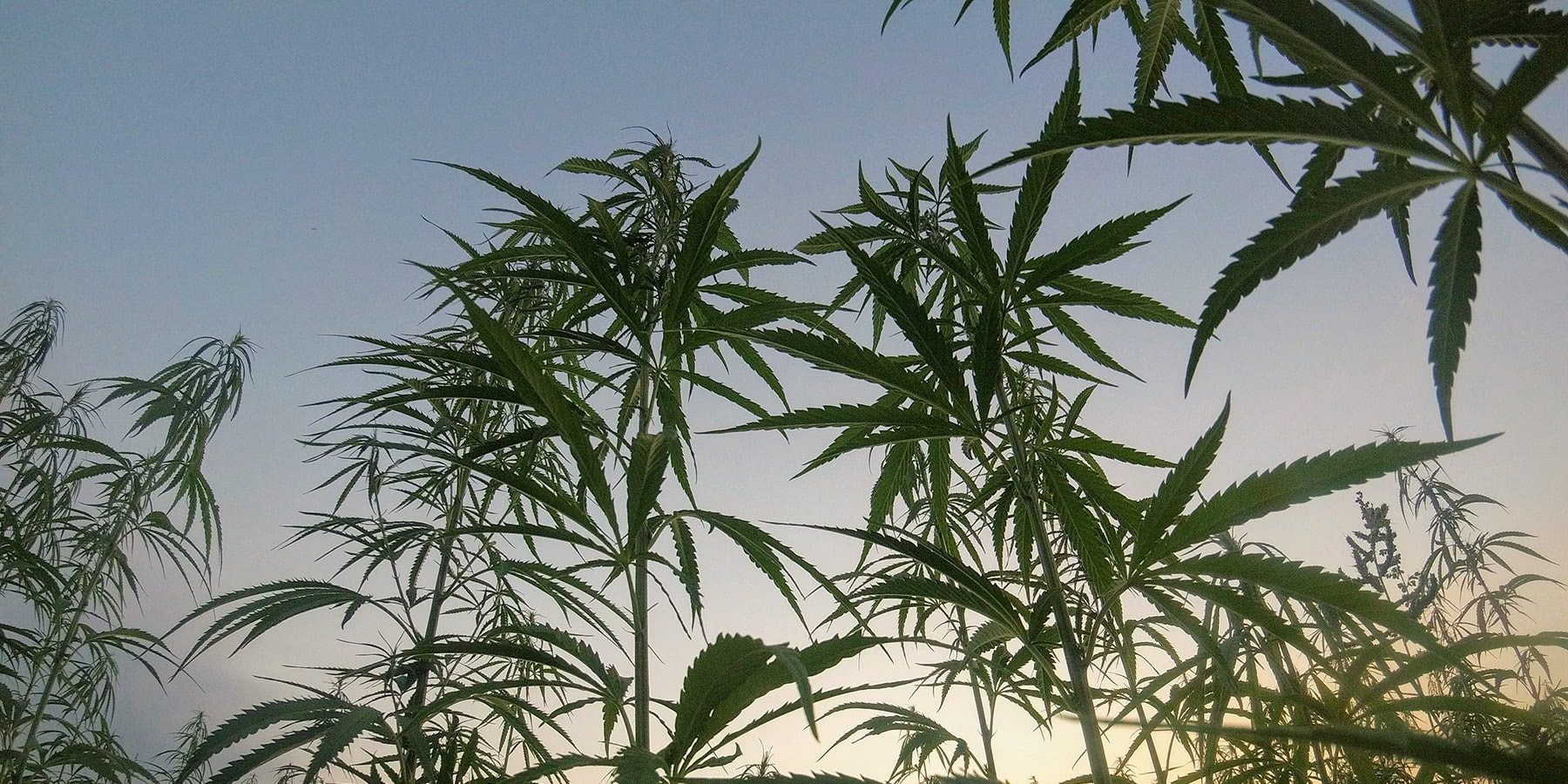Driving while high on THC? Here’s what you should know
October 16, 2019 | Article by Chain | Cohn | Clark staff | Tips & Information Social Share

Marijuana today has become mainstream as voters across the United States approve ballot measures for legalization and medical use. In fact, cannabis is now legal for recreational use in 10 states (including California) and the District of Columbia, and nearly three dozen states have cleared the use of medical cannabis.
As legalization continues to expand, safety officials across the country are more concerned than ever about stoned drivers taking to the nation’s roads and freeways, potentially endangering lives. But while there’s general agreement that driving while high is bad, there is not yet a linear relationship between THC levels and degree of impairment.
Read below to learn about the current state of marijuana laws as they relate to driving, ongoing studies, and what you can do to make sure we are all safe on the roadways.
CALIFORNIA LAW
DRIVING WHILE STONED
Government agencies are now testing ways to ensure the legalization of cannabis doesn’t create new public health risks, including answering the question, “at what point is someone too high to get behind the wheel?” The answer is complicated.
Scientists and pharmacologists don’t know how to measure if and to what extent marijuana causes impairment. The reason is existing blood and urine tests can detect marijuana use, but those tests can’t specify whether the use occurred in the day or month. They also don’t indicate the level at which a driver would be considered “under the influence.”
For alcohol, there is a clear, national standard. If your blood alcohol content (BAC) is 0.08 percent or higher, you’re considered cognitively impaired at a level that is unsafe to drive. Extensive research supports this determination, and the clarity makes enforcement of drunken driving laws easier, according to National Highway Traffic Safety Administration. But setting a marijuana-related impairment level is a murkier proposition.
Eaze, an online cannabis marketplace, recently surveyed licensed Californian drivers who used cannabis within 30 days of responding, and here’s what they found:
- Nearly half, 46%, who responded were unable to answer whether there exists a legal bloodstream concentration limit for THC, as there is for alcohol.
- 81% were aware that it is illegal to drive under the influence of cannabis.
- 62% also were unaware of the legal penalties that come with it. Like a DUI involving alcohol, they can include fines, jail time and license suspensions.
- 82% stated that driving is the primary method by which most marijuana consumers buy cannabis
- Almost half, 45%, reported driving after consuming the drug.
- Of adults who consume and drive, 77% believe it doesn’t affect their driving, and 16% believe it improves their driving.
- A vast majority said they would not do so if low- or no-cost ride-share options, or delivery, were available.
In the end, the study showed that “few know critical details about cannabis consumption and driving.”
BREATHALYZERS?
Breathalyzer tests for alcohol are a quick and non-invasive way to tell if a driver is drunk. Testing for stoned drivers isn’t as straightforward. And there is no known correlation between blood THC concentration and impairment, and testing requires a blood or saliva sample. These complications have made it a challenge to gauge whether legalization makes the roads more hazardous. Some areas have laws that define a predetermined concentration of THC in the blood as illegal whether or not the driver appears impaired.
One company, called Hound Labs, is working on a breakthrough in creating a marijuana breathalyzer.
The company says its device can accurately detect whether a person has smoked pot in the last two hours. The device also doubles as an alcohol breathalyzer, giving police an easy-to-use roadside for both intoxicants.
Other tools now on the market to determine marijuana test blood, saliva or urine can take days for a result.
For now, law enforcement agencies rely mostly on roadside sobriety tests by officers to make an initial determination on impairment. In California, every highway patrol member learns to administer “field sobriety tests” — undergoing an extra 16 hours of training to recognize the influence of different drugs, including marijuana.
RESEARCH
Studies do show that marijuana does, in fact, weaken a driver’s ability to maintain focus, and it slows reflexes. But more research is still needed, experts say.
Research by the Center for Injury Epidemiology and Prevention at Columbia University showed that half of young drivers, age 16 to 25, who died in car crashes were under the influence of alcohol, marijuana or both. In 2015, 43 percent of all drivers killed in vehicle crashes who were tested, tested positive for legal or illegal drugs, according to the NHTSA. In California, 19 percent of all drivers killed in motor vehicle crashes who were tested, tested positive for legal or illegal drugs. And those percentages have been increasing each year.
Drugged driving is known as “a silent epidemic,” because there is a misconception that it’s OK and is safe to drive after smoking pot, as NPR reported. And the public — especially teenage drivers — are not well aware of some of the hazards of drugs such as marijuana on driving.
A major study underway on driving impairment at University of California San Diego’s Center for Medicinal Cannabis Research is scheduled to wrap up next year. Other groups, including the National Institute of Standards and Technology in Boulder, Colo., are working on creating standards for a marijuana DUI detection test.
STAYING SAFE
The advice for pot users and driving is the same for all substances that cause impairment: never drive while under the influence!
Just like drunk driving, driving under the influence of drugs is a crime – even if impairment is due to prescribed medications, illicit drugs, over-the-counter medications or marijuana – medical or recreational. The dangers and legal consequences are the same.
Here’s what you need to know about driving while under the influence of marijuana:
- Marijuana slows your reaction time and ability to make decisions. Marijuana affects the part of the brain that controls body movement, balance and coordination and can impair judgment and memory. Studies show that driving while under the influence of marijuana negatively impacts attentiveness, perception of time and speed. Impaired memory can affect the ability to draw from past driving experiences, especially in emergency situations.
- The higher you are, the more risks you take while driving. Studies show that drivers with only a small amount of THC in their blood can feel the effects. They often try to be more cautious, driving slower than normal, even sometimes too slow. However, greater problems arise when increasingly larger doses of THC are present in the blood. These drivers tend to weave in and out of lanes more, react slower to traffic lights and unexpected obstacles and are less aware of their speed. Overall, higher doses of marijuana tend to cause greater impairment when it comes to driving.
- The effect of marijuana is strongest during the first 30 minutes after consumption. People who drive immediately after using marijuana may increase their risk of getting into a crash by 25 to 35 percent. The impairing effect rises rapidly and remains for some time. These affects can be delayed if the marijuana is ingested rather than smoked.
- Combining alcohol with marijuana or impairing medications is even more dangerous than any used alone. Alcohol is a depressant and works by slowing down the central nervous system, which means that normal brain functions are delayed. It also impairs hand-eye coordination and how you process information. When marijuana or the long list of impairing prescription medications and illicit drugs are mixed with alcohol, the combination can heighten the effects of both on the body and brain.
———
If you or someone you know is injured in an accident, please call the attorneys at Chain | Cohn | Clark at (661) 323-4000, or chat with us online at chainlaw.com.

